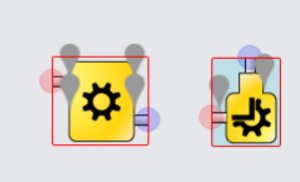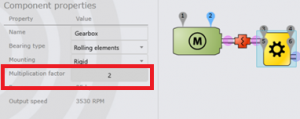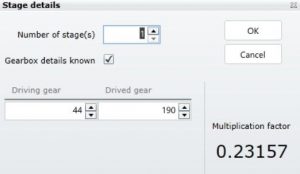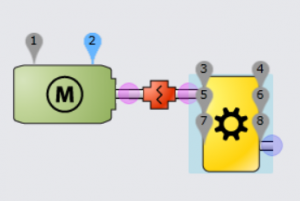 Gearboxes are common in industry. They are used to increase or decrease speed from the driver, provide increased torque, and change direction of power transmission.
Gearboxes are common in industry. They are used to increase or decrease speed from the driver, provide increased torque, and change direction of power transmission.
There are two main types of commonly-used gearboxes:
GEARBOX TYPE
 Parallel or Standard Gearbox-one where the input and output shafts are parallel.
Parallel or Standard Gearbox-one where the input and output shafts are parallel.- Bevel or Right Angle Gearbox-one where the input and output shafts are not parallel. In most cases, the input and out shafts are at right angles.
Of these, gearboxes can be:
- Single Stage-consisting of one input shaft with one gear and two bearings, and one output shaft with one gear and two bearings.
- Multi-stage-consisting of more than two shafts, more than two gears, and more than four bearings.
SINGLE STAGE GEARBOX
 An important part of the gearbox setup is the Multiplication Factor. This is a multiplier which is used to calculate the output speed of the gearbox, since practically all gearboxes are either slower or faster than the motor speed.
An important part of the gearbox setup is the Multiplication Factor. This is a multiplier which is used to calculate the output speed of the gearbox, since practically all gearboxes are either slower or faster than the motor speed.
You simply take the motor rpm, and multiply it by the Multiplication Factor. If the multiplication factor is more than 1, it means the output speed of the gearbox is more than the motor speed. If the multiplication factor is less than one, the output speed of the gearbox is less than the motor rpm.
IF THE MOTOR RPM AND GEAR RATIO IS KNOWN
- Let’s say the gearbox name plate says the gear ration is 4.32:1. That means for every 4.32 rotations of the motor, the output shaft on the gearbox turns one revolution. 1 / 4.32 = .231. That is the Multiplication Factor.
IF THE INPUT AND OUTPUT SPEEDS ARE KNOWN
- Let’s assume an input speed of 1763 (motor rpm), and an output speed of 408 rpm. 408/1763 = .231. That is the Multiplication Factor.
IF NEITHER SPEED IS KNOWN
- Use a stroboscope or photo-tachometer to lock onto the motor rpm (1763) and the gearbox output rpm (408). 408/1763 = .231.
IF THE GEAR TOOTH COUNTS ARE KNOWN
 If you know the number of teeth on the input gear, and on the output gear, you can calculate the multiplication factor.
If you know the number of teeth on the input gear, and on the output gear, you can calculate the multiplication factor.- If we had 44 teeth on the input gear, and 190 teeth on the output gear, we would calculate the ratio as .231
MULTI-STAGE GEARBOX
 If we have a gearbox with multiple stages, it means there are:
If we have a gearbox with multiple stages, it means there are:
- More than two shafts
- More than two gears
- Typically, two bearings per shaft.
Calculating the output speed is done the same way as above.
With traditional vibration tools, many other things are required, such as:
- Accurate gear tooth counts
- Gear mesh frequencies
- Bearing numbers for each bearing on each shaft.
With one of the new machinery diagnostic tools, like the OneProd HAWK, the data inputs are much simpler. The HAWK uses ISO specifications and specialized “smart” software to determine bearing and gear faults. So, the only requirements are the input speed, and the multiplication factor. This makes an accurate determination of the gearbox health simple.
Want to know more? See the Hawk at https://acoem.us/tools/machinery-diagnostics/hawk-supervisor/



